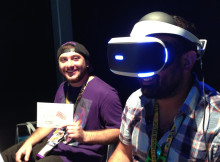This is an Editorial I did research for and wrote for my site GameGravy.com
VR has come a long way but its still in its infancy of being adopted by mainstream consumers. Believe it or not though VR is hitting hard and is finally released with tons of support and not many people know what’s out there and what these companies have to offer or how they compare, hence me writing this article. In the feature picture of this editorial you can see me wearing the PSVR trying the exploding demo at E3 last year.
Let’s start off with some fun historical facts, that way when you talk to your friends you can serve them up a can of VR fact sauce. When do you think Virtual Reality was first conceived?
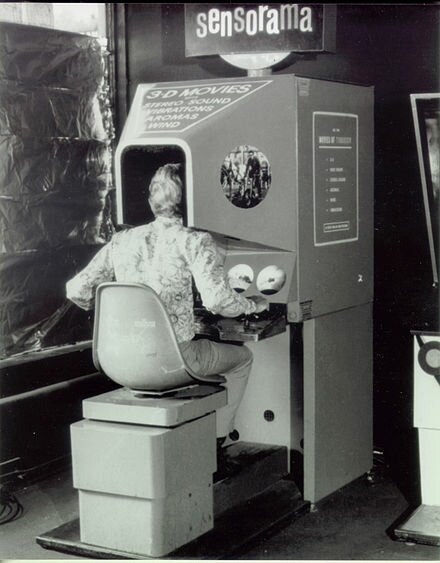 1962 Sensorama
1962 SensoramaThe first references to the concept of Virtual Reality came from science fiction writing. Stanley G. Weinbuams 1935 short story “Pygmalion’s Spectacles” which Stanley describes a goggle-based system with holographic recording of fictional events including smell and touch.
It gets better, in 1950’s Morton Heilig wrote of an “Experience Theatre” machine that could encompass all the senses thus drawing in a viewer more into an experience. Morton built an actual mechanical prototype and called it Sensorama in 1962, along with five short films to watch within it. The Sensorama engaged all senses; sight, sound, smell and touch. These are your fun VR facts of the day, on to modern times though; we’ve come a long way with technology since then.
We essentially have three big VR headsets that are available for purchase on the consumer market currently, this doesn’t include cell phone VR headsets. There are a ton of cardboard and plastic built cell phone encompassing cases. This is more about VR Systems with a software platform and ecosystem. We have the:
Oculus Rift
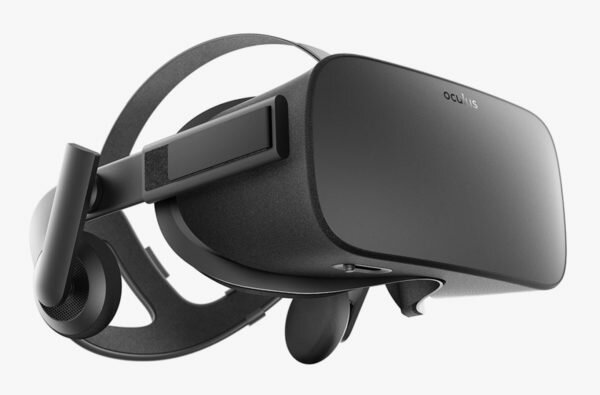
HTC Vive
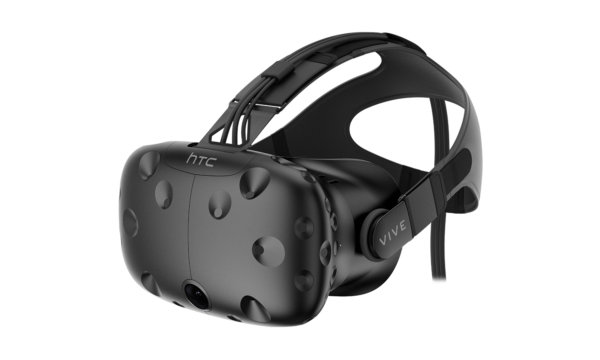
Playstation VR (PSVR)
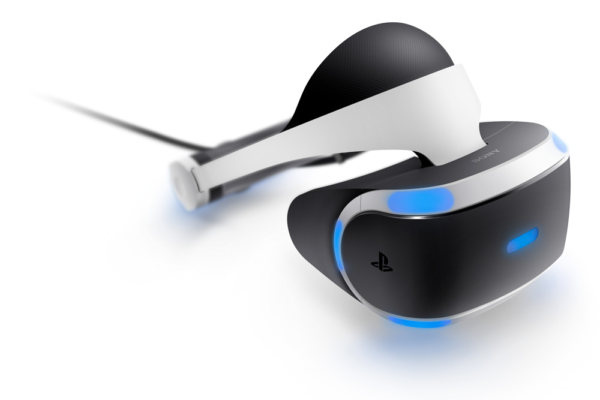
Lenovo also announced a new VR headset this year at CES that will be released later in 2017. When we receive more details about that, I’ll write something up on it but for now this is about the major three.
The next thing people always ask is which is the best and why? How much does it cost? What can you play with it? I’m going to break it down by setup time, controllers, design and comfort, games and software, image quality/specs, movement and then price with a pros and cons list and then finally a conclusion. So don’t worry we’ll cover a lot.
Setup Time
Diving in with straight facts. Out of all the headsets the HTC Vive takes about an hour to setup due to the software and intricacy of the cameras and everything that goes into configuration. The Oculus Rift takes about twenty minutes to setup quick and right out of the box. The PSVR takes twenty minutes to setup as well, so the Oculus and PSVR are the quicker headsets to setup straight of the box.
Controllers
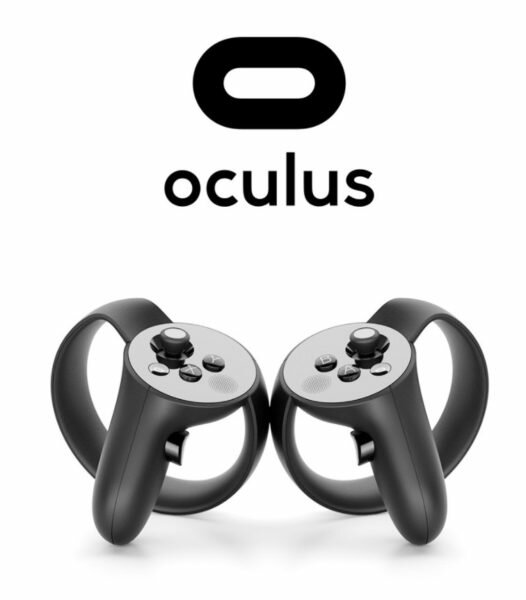 The Oculus Rift has a package that comes with an Xbox One controller, so those that are hugely familiar with console gaming won’t have any learning curve here its just like a console. They also have their Touch Controllers that are very similar to the quality and feel of the HTC Controllers but are quite different in function. The Oculus touch controllers have a circle that wraps around your hand and can actually tell if you are touching the controls or giving thumbs up or are pointing which is pretty amazing for gesture recognition and further immersion in games.
The Oculus Rift has a package that comes with an Xbox One controller, so those that are hugely familiar with console gaming won’t have any learning curve here its just like a console. They also have their Touch Controllers that are very similar to the quality and feel of the HTC Controllers but are quite different in function. The Oculus touch controllers have a circle that wraps around your hand and can actually tell if you are touching the controls or giving thumbs up or are pointing which is pretty amazing for gesture recognition and further immersion in games.
 The HTC Vive comes with two wireless motion controllers that are very ergonomic and unique, giving you a great experience for immersive first person titles. Like the PSVR there are two controllers that you’ll need but they come packaged with the system along with the link box and sensor, so you’ll be all set right out of the package. You can also use any PC compatible gamepad as well, so this system is pretty diverse. The motion controls are like the Oculus Touch with circles above the controller except they don’t wrap around your hand but are still very comfortable and feel natural for shooter games. They are currently working on a new model controller that wraps around your hand and looks quite awesome with improved gesture recognition, to see those check out this site here.
The HTC Vive comes with two wireless motion controllers that are very ergonomic and unique, giving you a great experience for immersive first person titles. Like the PSVR there are two controllers that you’ll need but they come packaged with the system along with the link box and sensor, so you’ll be all set right out of the package. You can also use any PC compatible gamepad as well, so this system is pretty diverse. The motion controls are like the Oculus Touch with circles above the controller except they don’t wrap around your hand but are still very comfortable and feel natural for shooter games. They are currently working on a new model controller that wraps around your hand and looks quite awesome with improved gesture recognition, to see those check out this site here.
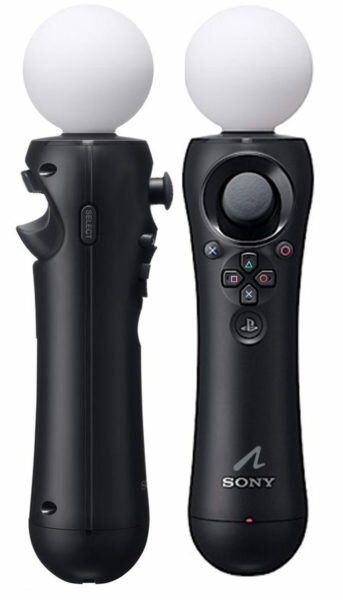 PS Move Controllers
PS Move ControllersWith the PSVR there are packages that come with everything including two PS Move controllers but ultimately the headset comes alone, you’ll have to purchase the controllers and PS Camera separately. You can also use the Playstation controller for game specific titles so this is very convenient as well. The move controllers are easy to use but look like plastic toys and almost feels like you’re playing with a Wii controller. The dexterity and light snappy feeling isn’t there that the HTC Vive and Oculus have with their Touch and Vive controllers.
Design and Comfort
The design of all three of these headsets are quite unique and all focus on different things but still keep comfort in mind. The Oculus is all about design with one thing in mind – lightness. It’s a tricked out VR headset stripped down to the bare essentials for performance. The headset is noticeably petite compared to the HTC Vive which means it weighs less. The straps are thin and light as well which enable you to get a tight fit and make it feel part of you to keep you immersed in the experience.
The HTC Vive on the other hand is souped up with all the bells and whistles, they also feature a unique design but it does look more fancy that the Oculus. The Vive also features a front-facing camera, power off button and knob for adjusting the lens. It has velcro straps similar to the Oculus making sure the fit is comfy, snug and secure.
The PSVR design looks very nice and shiny and quite futuristic. It honestly looks the best in my opinion from an exterior perspective. The headband is solid and is adjustable and goes across your whole head for ultimate comfort but it is a little front heavy which is the major difference between these headsets.
Games and Software
Let’s start with the PSVR, you have a PS4 or PS4 Pro, then that’s the software you need. You’ll get content by purchasing games either physically on disc or digitally via the PSN Store. There are a ton of titles available although very little AAA support minus Resident Evil 7 which is the whole game and one X-Wing mission in Star Wars Battlefront, which looks amazing. Below is a link to all the games available for PSVR.
https://www.playstation.com/en-us/explore/playstation-vr/games/
The PSVR also has a Cinematic mode option, which lets you see the PS4 User Interface and play apps and any PS4 game or movie within the PSVR headset which is quite cool. You can even open up YouTube and view 360 videos. In VR Cinematic mode its like having a TV in front of you, there are three different sizes; Small (117 inches), Medium (163 inches) and also Large (226 Inches) and is place virtually at 6-10 feet away from you.
The Oculus Rift has the Oculus Home software which acts as a library and storefront for the headset and places you digitally in a home. You are in a house and in front of you is your menu, you can see your friends list, library and store front to purchase games and spin around and check out the house around you. Check out the Oculus home below.
https://www.youtube.com/watch?v=1N6Lf9st2dQ
The HTC Vive uses its own software called Vive Home, surprise. Its similar to Oculus home except it starts you off in a space looking station. The cool part about Vive home is they are direct partners with Valve, so you can access Steam VR directly from the Vive Home screen, which is a distinct advantage. If you aren’t familiar with Steam check it out here(http://store.steampowered.com/), its a gaming ecosystem and storefront for PC users that many people have purchased games on, and now with Steam VR you have a huge library of games at your disposal including major AAA titles.
You can also use the spaces button on the menu and choose a different environment if you don’t care for the space station for your home space, access your app library and store as well. Although I do admit the Oculus Home software feels more cozy, especially with that digital fireplace. Check out the Vive Home below.
Movement and Range of Motion
The Oculus Rift is meant to be played sitting down, Oculus recommends 3-6 feet distance from the sensors. The headset does come with one sensor bar and two sensor bars if you purchase the Touch Controllers, but to get the full range 360 motion you’ll need at least 3 sensors, 4 for superior movement. With three sensors you can get 8.2 x 8.2 feet of motion in 360 degree motion.
Right out of the box the HTC Vive comes with 360 motion and is meant to be played standing up. The range of motion is 11.2 x 11.2 feet, 15×15 feet max.
The PSVR is different in this aspect, you’re using a PS Camera for detection and are meant to play sitting down the camera sweet spot is in the 5-6 feet distance and you do have a 360 degree of motion.
Image Quality/Specs
You can see the different specs below and notice that the HTC Vive and Oculus Rift compare quite close. Also the PSVR weighs the most out of all three headsets and the Oculus weights the least.
PSVR specs
- OLED, 960×1080 each eye. 1920×1080.
- 100 degrees field of view
- 120Hz, 90Hz refresh rate
- 1.34 lbs weight
HTC Vive Specs
- OLED, 2160×1200 resolution
- 110 degrees field of view
- 90hz refresh rate
- 1.224 lbs weight
Oculus Rift Specs
- OLED, 2160×1200 resolution
- 110 degrees field of view
- 90hz refresh rate
- 1.036 lbs weight
Price
- PSVR Launch Bundle: $499, comes with PSVR Headset, Two Move controllers, PS Camera and Playstation Worlds game.
- PSVR Headset only $399
- Oculus Rift: $599 comes with headset, sensor, remote, cables, Xbox One Controller and game Lucky’s Tale.
- Oculus Rift + 2 Touch controllers package: $798
- Extra sensors needed for stand up 360 movement. Only one is included with normal package, and two sensors are included in the touch package.
- HTC Vive: $799 comes with headset, two wireless controllers, two base stations, link box, earbuds, vive accessories and Zombie Training Simulator and also The Gallery- Episode 1 Call of the Starseed.
Pros/Cons
HTC Vive Pro:
- Great resolution
- OLED 2160×1200 resolution
- Front facing camera for collision detection and movement
- Bluetooth connection available
- Best for living room space since its so immersive, huge movement area 11.2×11.2 ft 15x15ft max.
- Slick custom/comfortable wireless motion controllers, comes with two
- Partnership with Valve, Steam VR game software integration
HTC Vive Con:
- It’s pricey
- Heavier on your head, not conducive to 3-4 hours of gameplay
- Long setup, about an hour
Oculus Pro:
- Great resolution
- OLED 2160×1200 resolution
- Light headset, comfortable, conducive to long gaming
- Xbox One Controller comes in the bundle
- Quick 20min Setup
- Oculus Home software is cozy
- Partnership with Microsoft
Oculus Con:
- Also pricey
- To expand to 360 range of movement for standing you need to spend an extra $79 to get the three sensor setup.
- Best for sitting down unless you upgrade
PSVR Pro:
- Cost is less out of the three headsets
- Full range of motion
- Access to Playstation exclusives
- It’s at least HD, OLED 1920×1080
- Cinematic mode
PSVR Con:
- Resolution isn’t as good as Oculus or HTC Vive
- Sensor isn’t as good or expansive as both headsets
- Move controllers are lacking and aren’t as comfortable to use
- No hand or finger gesture like the other two headsets
- Lack of AAA titles
Conclusion
In regards to the best headset out there and what’s currently offered its close between the Oculus and HTC Vive. This will obviously change as things evolve and improve. Both have very similar specs but software is quite different, also range of motion is different. In regards to straight out of the box offerings I’d have to say my preference is the HTC Vive, not only because it has a full range 360 motion and large area to move around in but because it has great software tie-ins not only to independent titles but AAA titles as well on Steam. Oculus would be my first if they announce some more software perhaps exclusive Xbox One Integrations, and I didn’t have to pay an extra $80 for the third sensor so I can play standing up and turn around. The PSVR is just too much in its infancy, the specs aren’t quite there and the lack of software is disappointing but it looks beautiful and its nice it has cinematic mode but lets face it, if you have a large TV at home using cinematic mode is the same thing as playing a game on screen.

